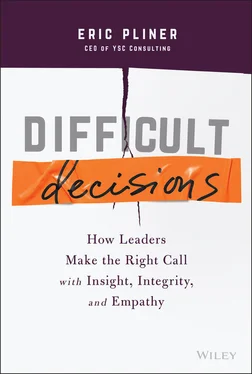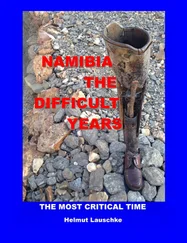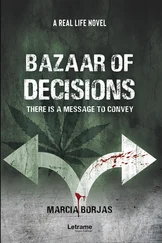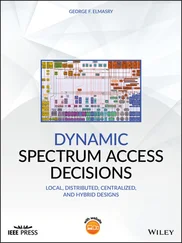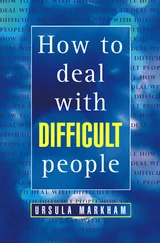Eighteen months later, as we prepared to reopen these same locations, our original questions took on different nuance, greater complexity, and an unexpected layer of conflict among the dimensions. We'd managed our role responsibilities to the business successfully, transferring our services from primarily in-person to primarily virtual, and there'd been limited change in our ethical context (we were still motivated by not wanting to put people in harm's way). But this time, there was a conflict between that ethical context, our responsibilities to our employees and customers to reopen our offices, and a critical moral belief held and enacted with reasonable consistency across our team: the belief in and support for autonomy and optionality regarding individual and family health choices.
For years, we'd offered a variety of flexible benefits that enabled employees to select the support that best matches their individual and/or family needs and budgets. The six weeks of annual leave that we granted to all employees was entirely flexible, and we strongly encouraged its full use each year. We matched benefits to local market needs and demands, providing paid lunch options in some locations, extended a range of subsidized health plans in markets without government-sponsored medicine, provided a mix of paid and unpaid leave options (up to a year) for new parents, gave sabbaticals every four years to professional services staff, and offered all team members unrestricted leave for bereavement and for mental, physical, and other health needs. We made mistakes and adjustments along the way, but the bottom line underpinning our approach to our employees was to recognize individual humanity, foster personal choice, and to allow people to craft the path that was most right for them and their circumstances.
Further, two years prior, we'd introduced our entire firm to the concept of community care . In doing so, we worked to remove the selfishness implicit in self-care by upending the belief that individuals must do what they need to do for themselves regardless of the impact on others and replacing it instead with the belief that we all have the responsibility, obligation, and opportunity to care for ourselves while caring for each other. That shift in impact had been profound, resulting in colleagues making sure that they weren't dumping unfinished work on others when they went off on vacation, managing our communication styles and channels with greater attentiveness to individual preferences and needs, and even introducing “meet-free Fridays,” a day to catch up on work without the burden of internal meetings and calls.
Although we didn't spot it in advance, the conflict between individual choice and community care seems glaringly obvious now. While some of our employees around the world clamored desperately for access to vaccines, several in the US insisted that COVID vaccination was a deeply personal choice that they'd elected to avoid – some for faith-based reasons, some for reasons of historical bias in medicine against Black Americans and other people of color, and some for personal health reasons, among others. At the same time, our team included employees with family members who could not be vaccinated (such as children under 12, for whom the vaccines were not yet approved) or who were immunocompromised (cancer survivors, those living with HIV/AIDS), and it had been established that vaccinated individuals could still carry the virus, making the notion of community care particularly important. And we weren't operating in isolation; we watched as President Biden “call[ed] on private companies to issue vaccine requirements” 8 and agonized as a subset of our employees begged for access to the office – partly as a component of their own quality of life.
We went back and forth among our lived moral belief (that it is right for individuals to be able to make the health choices that are most right for themselves and their loved ones, and that we as an employer should help to make that possible); our explicit ethical framework (that community care that includes self-care should always take precedence over pure self-care); and our role responsibilities (we had a business to run, investors to satisfy, and empty offices with fully paid rent on our books).
Ultimately, with congruence between our role responsibilities and ethical framework, the moral choice was clear. Or was it?
Leaders can and should design their desired leadership styles, interactions and dynamics, and organizational cultures with intent, rather than leaving these critical human elements to default.
The most difficult decisions cannot be made objectively, no matter how many analytics we complete; they challenge us precisely because they are human and subjective.
Personal morality, ethical context, and the role responsibilities of the leader all exist in service of good.
Leadership is always interpersonal and affects real people's real lives.
Every leadership decision contains both ethics and morals; understanding these clarifies the relationship between our individual beliefs and the expectations of our context.
Making everyone happy is impossible; shaping a net-positive outcome is made more likely by exploring the moral, ethical, and role triangle regularly and in advance.
1 1Caroline Castrillon, “5 Ways to Go from a Scarcity to Abundance Mindset,” Forbes. July 12, 2020. https://www.forbes.com/sites/carolinecastrillon/2020/07/12/5-ways-to-go-from-a-scarcity-to-abundance-mindset/?sh=2e6366ce1197.
2 2Frances Cole Jones, How to Wow: Proven Strategies for Selling Your [Brilliant] Self in Any Situation (New York: Ballantine Books, 2008).
3 3Kevin Yamazaki, “Reconciling the AI-human conflict with the centaur model,” CIO Review (n.d.), https://artificial-intelligence.cioreview.com/cxoinsight/reconciling-the-aihuman-conflict-with-the-centaur-model-nid-24514-cid-175.html.
4 4Yunfeng Zhang, Rachel K.E. Bellamy, and Wendy A. Kellogg, “Designing Information for Remediating Cognitive Biases in Decision-Making,” Proceedings of the 33rd Annual ACM Conference on Human Factors in Computing Systems, April 2015, 2211–2220, https://dl.acm.org/doi/abs/10.1145/2702123.2702239.
5 5Michael Kirchler et al., “The effect of fast and slow decisions on risk taking,” Journal of Risk and Uncertainty, June 7, 2017, 37–59. https://link.springer.com/article/10.1007/s11166-017-9252-4.
6 6Erik Brynjolfsson, Lorin M. Hitt, and Heekyung Hellen Kim, “Strength in Numbers: How Does Data-Driven Decisionmaking Affect Firm Performance?” SSRN, December 12, 2011, DOI: 10.2139/ssrn.1819486.
7 7Chip Cutter, “Auto & Transport Roundup: Market Talk.” Wall Street Journal, News Plus. February 7, 2020.
8 8Lauren Egan, “Biden Calls on Private Companies to Issue Vaccine Requirements,” NBC News. August 23, 2021. https://www.nbcnews.com/politics/white-house/biden-calls-private-companies-issue-vaccine-requirements-n1277470.
Конец ознакомительного фрагмента.
Текст предоставлен ООО «ЛитРес».
Прочитайте эту книгу целиком, купив полную легальную версию на ЛитРес.
Безопасно оплатить книгу можно банковской картой Visa, MasterCard, Maestro, со счета мобильного телефона, с платежного терминала, в салоне МТС или Связной, через PayPal, WebMoney, Яндекс.Деньги, QIWI Кошелек, бонусными картами или другим удобным Вам способом.
